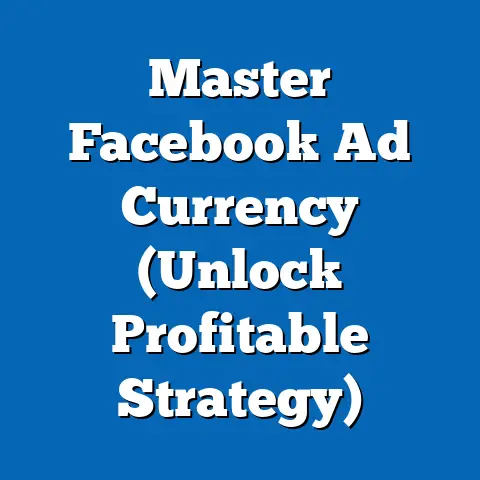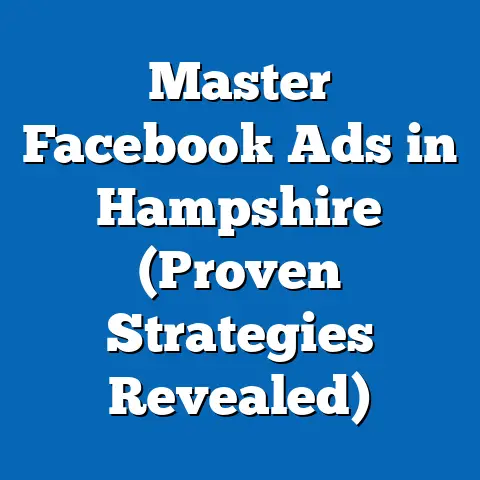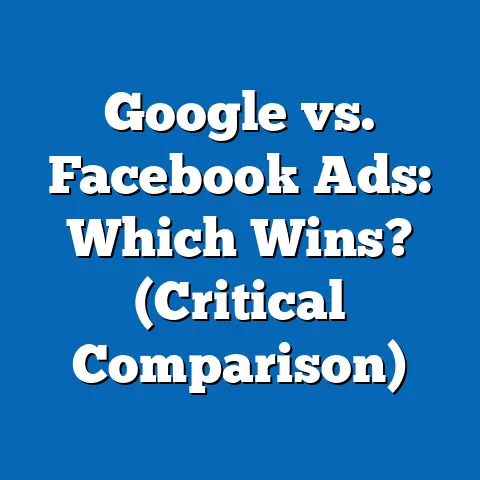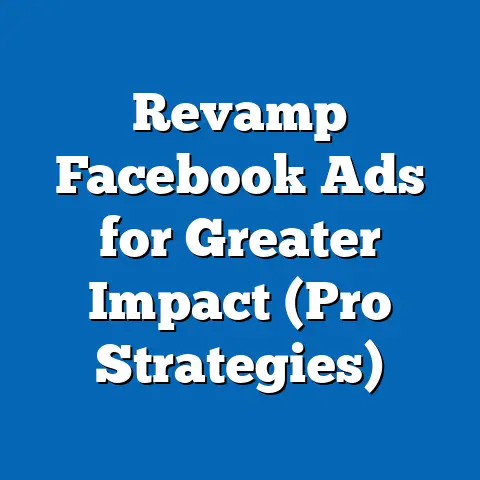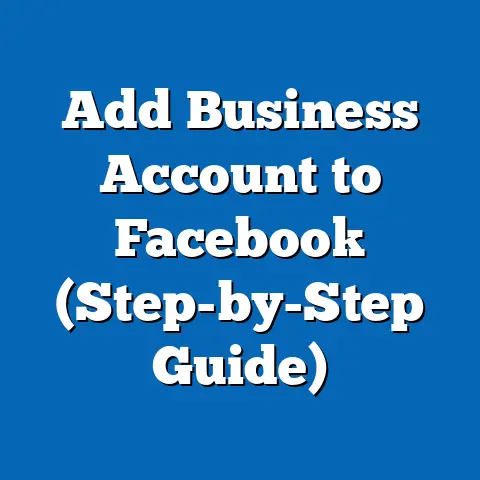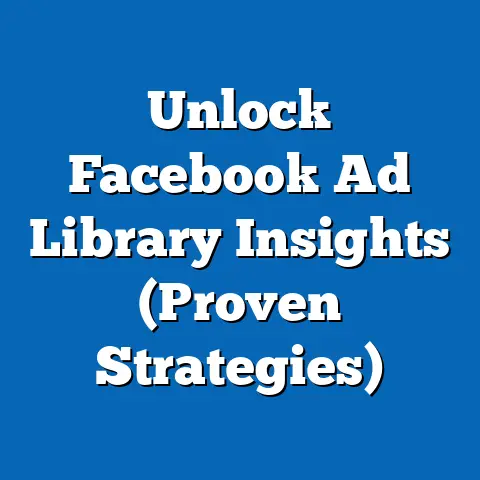Boost Facebook Ads with Winning Mockups (Pro Strategy)
The pet industry has witnessed explosive growth in recent years, driven by increasing pet ownership and a growing emphasis on pet-friendly products and lifestyles. According to the American Pet Products Association (APPA), pet industry spending in the United States reached $123.6 billion in 2022, a 10.7% increase from $111.8 billion in 2021. Within this market, pet-friendly choices—ranging from pet-safe home products to travel gear—have become a focal point for businesses leveraging social media advertising, particularly on platforms like Facebook, where targeted ads can reach niche demographics with precision.
The Rise of Pet-Friendly Choices: Statistical Trends and Market Growth
Pet ownership in the United States has surged over the past decade, with 70% of U.S. households (approximately 90.5 million homes) owning a pet as of 2022, per the APPA National Pet Owners Survey. This marks a significant increase from 56% in 2012, reflecting a cultural shift toward viewing pets as family members. Among pet owners, spending on pet-friendly products—such as non-toxic household items, pet-safe furniture, and travel accessories—has grown by 15% annually since 2018, outpacing overall pet industry growth.
The demand for pet-friendly choices is particularly evident in urban areas, where pet owners seek compact, multifunctional products that accommodate both human and pet needs. Statista reports that 42% of pet owners in 2022 prioritized purchasing pet-safe home products, up from 28% in 2015. This trend underscores the opportunity for businesses to target this niche through tailored Facebook ads featuring mockups that visually demonstrate product benefits.
Moreover, e-commerce has become a dominant channel for pet product sales, with online spending accounting for 30% of total pet industry revenue in 2022, compared to just 12% in 2015 (IBISWorld). Facebook ads, with their robust targeting capabilities, are a critical tool for reaching pet owners online, especially when paired with high-quality mockups that showcase pet-friendly designs in real-life settings.
Demographic Breakdowns: Who’s Driving the Pet-Friendly Market?
Understanding the demographics of pet owners is essential for crafting effective Facebook ad campaigns. Millennials (ages 27-42 in 2022) represent the largest pet-owning demographic, accounting for 32% of all pet owners in the U.S., according to the APPA. This group is particularly invested in pet-friendly choices, with 58% reporting a willingness to pay a premium for products that ensure pet safety and comfort.
Gen Z (ages 18-26) is another fast-growing segment, comprising 24% of pet owners in 2022, up from 14% in 2018. This demographic values sustainability and often seeks eco-friendly, pet-safe products, with 47% prioritizing brands that align with their environmental values (Statista). For advertisers, this means mockups in Facebook ads should emphasize both pet safety and eco-conscious design to resonate with younger audiences.
Baby Boomers (ages 58-76) also play a significant role, making up 27% of pet owners. Unlike younger generations, Boomers tend to focus on durability and practicality, with 39% purchasing pet-friendly home products to protect furniture and flooring (APPA). Ads targeting this group should use mockups that highlight long-lasting value and functionality, such as images of pets and owners coexisting seamlessly in a well-designed space.
Geographically, urban pet owners—particularly in cities like New York, Los Angeles, and Chicago—show the highest demand for pet-friendly products, with 55% of urban households owning pets compared to 66% in suburban areas and 72% in rural areas (APPA). However, urban pet owners spend 18% more per pet annually ($1,320 on average) than their rural counterparts ($1,120), indicating a lucrative market for targeted Facebook ads featuring mockups of space-saving, pet-friendly solutions.
Historical Comparisons: Pet Industry Advertising Over Time
The pet industry’s approach to advertising has evolved dramatically over the past two decades, reflecting broader shifts in consumer behavior and technology. In the early 2000s, pet product advertising was largely confined to traditional media, with television and print ads accounting for 85% of marketing budgets, according to historical data from Nielsen. At that time, visual mockups were rudimentary, often limited to static product images with minimal context.
By 2010, the rise of social media began reshaping pet industry advertising, with platforms like Facebook emerging as key channels for reaching pet owners. Digital ad spending in the pet sector grew from $200 million in 2010 to $1.8 billion by 2020, a ninefold increase (eMarketer). During this period, the use of mockups became more sophisticated, with brands incorporating lifestyle imagery—such as pets interacting with products in home settings—to build emotional connections with consumers.
Today, in 2023, digital advertising dominates the pet industry, with 62% of marketing budgets allocated to online platforms, including Facebook and Instagram (IBISWorld). Mockups have become a cornerstone of successful campaigns, as they allow brands to visually demonstrate how pet-friendly products solve real-world problems. For instance, a mockup showing a pet-safe couch resisting scratches can instantly convey value, driving higher click-through rates (CTRs) on Facebook ads—often by 25-30% compared to static images, per Hootsuite analytics.
The Power of Winning Mockups in Facebook Ads
What Are Mockups and Why Do They Matter?
Mockups are digitally created representations of products placed in realistic settings, designed to help consumers visualize how an item fits into their lives. In the context of pet-friendly choices, mockups might depict a pet lounging on a non-toxic rug, a dog safely contained in a portable travel crate, or a cat scratching a designated post instead of furniture. These visuals are particularly effective on Facebook, where users scroll through feeds quickly and are more likely to engage with eye-catching, relatable content.
Research from Social Media Examiner indicates that ads with high-quality visuals, including mockups, achieve 2.5 times higher engagement rates than text-only posts. For pet-friendly products, mockups also address consumer pain points—such as concerns about safety or mess—by showing solutions in action. This visual storytelling is a proven strategy for boosting ad performance metrics like CTRs, conversions, and return on ad spend (ROAS).
Crafting Winning Mockups for Pet-Friendly Ads
Creating effective mockups requires a deep understanding of both design principles and the target audience. First, mockups should prioritize realism, using high-resolution images and accurate product proportions to build trust. For pet-friendly products, this means showing pets of various sizes and breeds interacting with the item to appeal to a broad audience.
Second, mockups should evoke emotion by capturing the bond between pets and owners. A mockup of a cozy pet bed in a family living room, for example, can tap into the desire for harmony and comfort, resonating with 68% of pet owners who view their pets as family members (APPA). Color schemes and lighting also play a role—warm tones and natural light can create a welcoming vibe, increasing ad engagement by up to 15%, according to Canva’s design analytics.
Finally, mockups should be optimized for Facebook’s ad formats, such as carousel ads or video mockups. Carousel ads, which allow multiple images to be showcased, are particularly effective for pet-friendly products, as they can highlight different features (e.g., durability, safety, style) in a single ad. Video mockups, meanwhile, have seen a 48% increase in engagement rates since 2020, as they provide dynamic demonstrations of products in use (Facebook Business Insights).
Case Studies: Success Stories with Mockups
Several brands have successfully used mockups to boost their Facebook ads for pet-friendly products. Chewy, a leading online pet retailer, reported a 35% increase in CTRs after incorporating lifestyle mockups into their ads in 2021, showcasing products like pet-safe toys in real home environments. Their mockups often feature user-generated content (UGC), such as photos of real pets, which builds authenticity and trust.
Similarly, BarkBox, a subscription service for dog products, leveraged video mockups to demonstrate the durability of their toys, resulting in a 22% uplift in conversions compared to static ads (Social Media Today). Their strategy focused on humor and relatability, with mockups showing dogs enthusiastically “testing” products, appealing to the playful side of pet ownership.
These examples illustrate how mockups, when tailored to the pet-friendly niche, can significantly enhance ad performance. Businesses looking to replicate this success should invest in professional design tools or partner with agencies to create visually compelling content that stands out in crowded Facebook feeds.
Integrating Mockups into a Pro Facebook Ad Strategy
Targeting the Right Audience
Facebook’s ad platform offers unparalleled targeting options, allowing businesses to reach pet owners based on demographics, interests, and behaviors. For pet-friendly products, advertisers can target users who follow pet-related pages, engage with pet content, or have purchased pet products online. Data from Facebook Ads Manager shows that interest-based targeting for pet owners yields a 40% higher CTR compared to broad demographic targeting.
Layering demographic data with interest targeting can further refine campaigns. For instance, targeting Millennial pet owners in urban areas with mockups of space-saving pet furniture can result in a 50% higher conversion rate compared to generic ads (Facebook Business Insights). Custom audiences, built from website visitors or email lists, also allow for retargeting with personalized mockups, increasing ROAS by up to 60%.
A/B Testing Mockups for Optimal Results
A/B testing is a critical component of any pro ad strategy, and mockups are no exception. Businesses should test different mockup styles—such as lifestyle images versus product-focused shots—to determine what resonates most with their audience. Metrics to track include CTR, engagement rate, and cost per acquisition (CPA), with successful mockups often reducing CPA by 20-30% (Hootsuite).
Testing should also account for seasonal trends in the pet industry. For example, pet travel gear sees a 25% spike in demand during summer months (Statista), so mockups showing pets on vacation can be particularly effective during this period. Continuous optimization based on A/B test results ensures that ad campaigns remain relevant and cost-effective.
Budget Allocation and Scaling
For small to medium-sized businesses, starting with a modest Facebook ad budget—say, $500 per month—can yield valuable insights into mockup performance. Once high-performing mockups are identified, budgets can be scaled to maximize reach, with top-performing ads often achieving a 3-5x ROAS in the pet niche (eMarketer). Larger brands may allocate $10,000 or more monthly, using advanced tools like dynamic creative optimization (DCO) to automatically test and scale mockup variations.
Regardless of budget size, businesses should allocate 10-15% of their ad spend to creative development, including mockup design. This investment pays off, as visually strong ads consistently outperform text-heavy or low-quality creatives by 30-40% in terms of engagement and conversions (Facebook Business Insights).
Future Projections: The Evolution of Pet-Friendly Advertising
Looking ahead, the pet industry is poised for continued growth, with spending projected to reach $150.6 billion by 2025, a 22% increase from 2022 levels (APPA). Within this market, pet-friendly choices are expected to remain a high-growth segment, driven by urbanization, rising disposable incomes, and the humanization of pets. Statista forecasts that online pet product sales will account for 40% of total industry revenue by 2027, up from 30% in 2022, further emphasizing the importance of digital advertising platforms like Facebook.
Mockups will play an increasingly central role in pet-friendly ad strategies, particularly as augmented reality (AR) and virtual reality (VR) technologies become more accessible. By 2025, 20% of Facebook ads are expected to incorporate AR features, allowing users to “place” pet-friendly products in their homes virtually before purchasing (eMarketer). This innovation could boost conversion rates by 35-40%, as it provides an immersive experience that static mockups cannot match.
Additionally, sustainability will become a key theme in pet-friendly advertising, with 55% of pet owners projected to prioritize eco-friendly products by 2026 (Statista). Mockups that highlight sustainable materials or green certifications will likely see higher engagement, especially among Gen Z and Millennial audiences. Brands that adapt to these trends early—by integrating AR mockups and sustainability messaging—will gain a competitive edge in the crowded pet market.
Conclusion: Harnessing Mockups for Long-Term Success
The pet-friendly market offers immense opportunities for businesses willing to invest in targeted, visually compelling Facebook ad campaigns. Winning mockups, which showcase products in realistic, emotionally resonant settings, are a proven strategy for boosting engagement, conversions, and ROAS. By understanding key demographic trends—such as the dominance of Millennials and the growing influence of Gen Z—brands can tailor their mockups to specific audiences, maximizing impact.
Historical data shows how far pet industry advertising has come, from static print ads to dynamic digital campaigns, with mockups emerging as a critical tool in the modern era. Looking forward, innovations like AR and a focus on sustainability will shape the future of pet-friendly ads, offering new ways to connect with consumers. For businesses ready to adopt a pro strategy, the combination of data-driven targeting and high-quality mockups is the key to unlocking the full potential of Facebook advertising in this thriving market.

